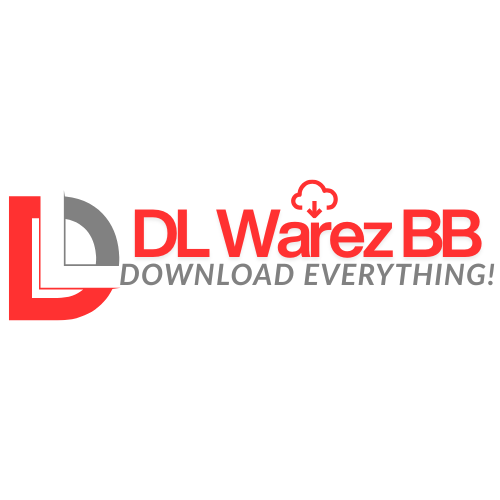01-13-2025, 12:56 AM
![[Image: 3ee78f30ba6b73fcca51856cb39ae1a9.jpg]](https://i124.fastpic.org/big/2025/0113/a9/3ee78f30ba6b73fcca51856cb39ae1a9.jpg)
Teradata: A Comprehensive Guide To Advanced Data Warehousing
Published 11/2024
MP4 | Video: h264, 1920x1080 | Audio: AAC, 44.1 KHz
Language: English | Size: 2.19 GB | Duration: 5h 58m
Unlock the power of Teradata for enterprise-level data management and analytics with this all-inclusive course!
[b]What you'll learn[/b]
The fundamentals and advantages of Teradata.
Teradata architecture, including SMP and MPP systems.
Primary and Secondary Index mechanics for efficient data access.
Advanced topics like hashing techniques, data protection, and locking mechanisms.
RAID technology, BYNET functionality, and fallback strategies.
How to optimize data warehousing with Teradata's features.
[b]Requirements[/b]
Basic knowledge of database concepts. Familiarity with SQL is helpful but not mandatory. A passion for learning enterprise-level data warehousing solutions.
[b]Description[/b]
Course Introduction:Teradata is a leading data warehousing solution trusted by enterprises for its scalability, reliability, and performance. This course equips students with a deep understanding of Teradata's architecture, functionalities, and features. From its fundamental principles to advanced concepts like hashing techniques, indexing, and data protection, this course is tailored for aspiring data professionals. Whether you are starting out or want to sharpen your skills, this course is the perfect gateway to mastering Teradata.Section 1: Getting Started with TeradataThis section serves as an introduction to Teradata, providing an overview of its features and its role in data warehousing. Students will gain foundational knowledge about the platform and understand how it fits into the broader data ecosystem.Section 2: Core Concepts of TeradataExplore the advantages of Teradata, its unique capabilities, and its core components like the Access Module Processor and Virtual Storage. This section lays the groundwork for understanding Teradata's powerful data management abilities.Section 3: Deep Dive into Teradata ArchitectureThis extensive section covers Teradata's architectural features and objects in detail, including MPP (Massively Parallel Processing) systems, database hierarchies, primary index mechanics, and hashing techniques. Students will also learn about space allocation and management, providing a comprehensive understanding of Teradata's internal workings.Section 4: Advanced Indexing MechanismsDiscover the functionality and differences between Unique and Non-Unique Secondary Indexes. This section also explores full table scans, emphasizing how indexing can optimize data access and retrieval.Section 5: System Architecture OverviewLearn about the system architecture of Teradata, including SMP (Symmetric Multiprocessing) and MPP systems. This section delves into the backbone of Teradata's performance and scalability.Section 6: Systems and BYNET TechnologyUnderstand the role of BYNET, a high-speed interconnect used in Teradata systems, and its integration into the overall architecture. This section explains how Teradata achieves efficient communication across components.Section 7: Data Protection and ReliabilityThis section focuses on Teradata's data protection mechanisms, including RAID technology, fallback solutions, and cliques. Students will understand how Teradata ensures data reliability and fault tolerance.Section 8: Clusters, Fallbacks, and Locking MechanismsExplore Teradata's advanced features for data redundancy and concurrency control. Topics like fallback clusters and locking strategies are discussed to ensure seamless database operations in multi-user environments.Conclusion:This course equips you with the expertise to leverage Teradata's capabilities for enterprise-level data warehousing and analytics. By mastering its architecture, indexing strategies, and data protection mechanisms, you will be well-prepared to tackle real-world challenges in data management.
Overview
Section 1: Introduction
Lecture 1 Teradata Introduction
Section 2: Teradata Basics
Lecture 2 Teradata Advantages
Lecture 3 Access Module Processor
Lecture 4 Teradata Virtual storage
Section 3: Teradata Background
Lecture 5 Teradata Introduction 1
Lecture 6 Teradata Introduction 2
Lecture 7 Teradata Introduction 3
Lecture 8 Teradata Introduction 4
Lecture 9 Teradata - Architectural Features and Objects 1
Lecture 10 Teradata - Architectural Features and Objects 2
Lecture 11 Teradata - Architectural Features and Objects 3
Lecture 12 Teradata - Architectural Features and Objects 4
Lecture 13 Teradata - Architectural Features and Objects 5
Lecture 14 Teradata - Architectural Features and Objects 6
Lecture 15 Teradata - Architectural Features and Objects 7
Lecture 16 Teradata - Architectural Features and Objects 8
Lecture 17 MPP Systems
Lecture 18 MPP Systems continued
Lecture 19 Database and Users (Database and Users)
Lecture 20 Database and Users (Database and Users) continued
Lecture 21 Hierarchy of Database and Users
Lecture 22 Types of Space
Lecture 23 Types of Space continued
Lecture 24 PI Access and Mechanics (Primary Key and Index)
Lecture 25 Primary Key and Index continued
Lecture 26 Specifying Primary Index and Values
Lecture 27 Specifying Primary Index and Values continued
Lecture 28 Primary Index Access
Lecture 29 Primary Index Access continued
Lecture 30 Highly Non-Unique Primary Index Access and Hashing Technique
Lecture 31 Highly Non-Unique Primary Index Access and Hashing Technique continued
Lecture 32 Hash Map,Identifying,Storing and Location row on amp
Lecture 33 Hash Map,Identifying,Storing and Location row on amp continued
Section 4: Unique & Non-Unique Secondary Index access
Lecture 34 Unique Secondary Index access
Lecture 35 Unique Secondary Index access continued
Lecture 36 Non-Unique Secondary Index Access
Lecture 37 Full Table Scans
Section 5: System Architecture
Lecture 38 System Architecture - SMP and MPP Systems
Lecture 39 System Architecture - SMP and MPP Systems continued
Section 6: Systems and BYNET
Lecture 40 Systems and BYNET
Lecture 41 Systems and BYNET Continued
Section 7: Data Protection and RAID Technology
Lecture 42 Data Protection and RAID Technology
Lecture 43 Data Protection and RAID Technology continued
Lecture 44 Clique and Fallback
Section 8: Fallbacks clusters and locks
Lecture 45 Fallbacks clusters and locks 1
Lecture 46 Fallbacks clusters and locks 2
Lecture 47 Fallbacks clusters and locks 3
Database administrators and data professionals seeking to expand their skill set.,IT professionals exploring enterprise-level data warehousing solutions.,Students or beginners eager to learn data warehousing with Teradata.,Anyone interested in optimizing large-scale data storage and retrieval systems.
![[Image: isgle0Rp_o.jpg]](https://images2.imgbox.com/27/8e/isgle0Rp_o.jpg)
![[Image: signature.png]](https://softwarez.info/images/avsg/signature.png)







